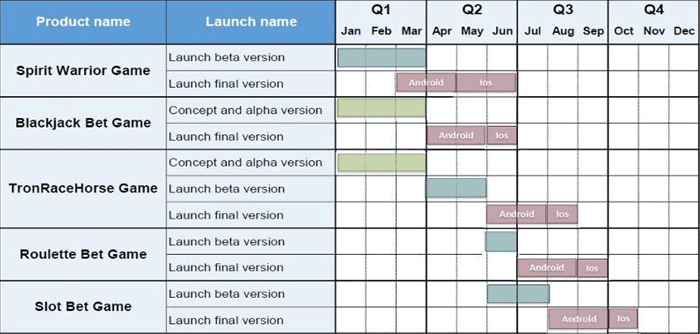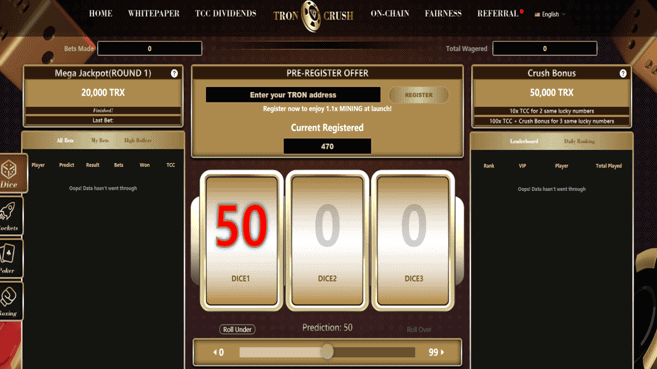Ethereum has risen by a bit more than 3% over the last 24 hours (again), and it trades at USD 167 and remains the world’s second largest cryptocurrency in market capitalization. But a couple of good days can’t override the big picture regarding Ethereum (of course, it’s up because the whole market is in green). Analysts point out that the project founded (and still led) by Vitalik Buterin is losing (has already lost) a lot of momentum.
Bloomberg published a report recently showing that both Tron and EOS are more popular options than Ethereum regarding users and developers. So Ethereum’s market share is, at last, between a rock and a hard place.
Ethereum has competition now (for some time already)
When Mr. Buterin created and launched Ethereum, back in 2015, it was hailed as crypto’s new “game changer.” It wasn’t just a cryptocurrency like Bitcoin, but also a programmable platform that brought to the world, for the first time, blockchain-based smart contracts and decentralized applications. So it was regarded as superior to Bitcoin some ways, and it just rocketed upwards for two years.
But it seems those days are gone. Bloomberg’s report shows that the once revolutionary network’s piece of the pie is getting smaller as time goes by. The report attributed Ethereum’s meteoric rise to the lack of competition it enjoyed for those two years. Most other blockchains were just cryptocurrency networks without technological advances similar to those offered by Ethereum. So as long as it was the only game in town, Ethereum did great.
But times are changing, and new blockchain projects are appearing. Third-generation blockchain projects as opposed as Ethereum’s second-generation. Such new blockchains are challenging Ethereum’s dominance and are creating, at last, the competition needed by this market. Multicoin Capital Management’s Kyle Samani puts it like this:
“The simple reality is that until the last six-to-nine months, there were no other options besides Ethereum. Now there are.”
Ironically, two of the blockchains that are becoming Ethereum’s nightmare (Tron and EOS) were built on Ethereum’s network, and then they became independent by launching their own Main Nets, which have turned out to be faster, cheaper and more reliable than Ethereum’s.
It’s about speed, not Ether
Travis Kling founded Ikigai, a crypto hedge fund based in Los Angeles. He considers the migration from Ethereum to other networks as a result of reduced ETH demand. He thinks that as Ethereum’s new competition becomes more relevant, Ethereum’s fundamental value shrinks thus bringing Ether’s price down.
That has also affected the platform’s market share. It sinks as a led balloon. Just think about this piece of data: in January 2018, 100% of the world’s decentralized applications users were using said apps in Ethereum. This last January, that piece of the pie is a meager 8% according to dAppRadar. The cryptosphere has had more than 15 really lousy months. And yet, it’s been worse for Ethereum.
EOS and Tron are the current go-to dApp platforms with 48% and 24% of the world’s users.
The good news for Ethereum is that it still king when it comes to smart contracts, 40% of which still run in its network.
TronBet, one of the dApps running on Tron, has a trading volume of USD 41 Million weekly. It’s expected to profit USD 36 Million this year.
DappRadar’s CEO, Patrick Barile, explained that users are moving away from Ethereum and into EOS and Tron simply because the new networks are way faster than Ethereum’s. Faster speeds translate into improved user experience and are more attractive to developers. On top of that, some apps, such as gambling apps, just can’t possibly work at the speeds available in Ethereum. And don’t even get us started on gas prices.
But despite the hard competition and a difficult year to come, some observers still believe in Ethereum’s strength. Ethereum Foundation’s member, Hudson Jameson, asserted that Ethereum’s initial success was all about the community’s support and that the same factor will keep helping the platform regardless of other market conditions.
The project’s leadership has been coordinating developer’s efforts to improve the network’s throughput and transaction speeds for months so that the network performance improves so it can keep up with the new kids on the block. And Ethereum’s fanatics have high hopes in the network’s shift towards proof-of-stake as they believe that it will produce visible improvements in speed specifications.
We shall need to wait and see if Ethereum can react to the new market, now that there is actually a market. Its immense prestige has been sufficient so far to keep it relatively safe, but prestige can only go so far. The network will also need a better product if it wants its success as a platform matching its legendary status, which is based on past achievements rather than current performance.
Image courtesy of PixaBay.
Disclaimer: The presented information is subjected to market condition and may include the very own opinion of the author. Please do your ‘very own’ market research before making any investment in cryptocurrencies. Neither the writer nor the publication (TronWeekly.com) holds any responsibility for your financial loss.




